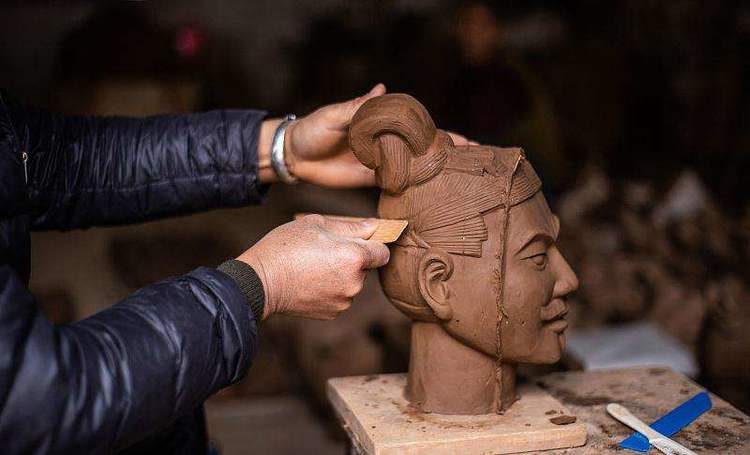
What Happened to the Workers Who Built the Terracotta Army?
The Terracotta Army, an awe-inspiring collection of life-sized terracotta figures, stands as a testament to the power and ambition of China's first emperor, Qin Shi Huang. Yet, the creation of this magnificent army remains shrouded in mystery, particularly regarding the fate of the thousands of workers who brought it to life.
The Legend of Buried Craftsmen
A pervasive theory, often depicted in popular culture, claims that all the artisans, craftsmen, and laborers involved in constructing the mausoleum complex, including the Terracotta Army, were buried alive. This chilling narrative posits that this act was intended to safeguard the secrets of the tomb's construction and prevent the emperor's resting place from being disturbed.
Historical Evidence and Archaeological Discoveries
While the notion of a mass burial is indeed a chilling one, historical evidence supporting this claim remains elusive. No firsthand accounts or contemporary texts explicitly mention such an event. Archaeological investigations around the mausoleum complex, while uncovering numerous burial pits containing the remains of workers, haven't provided conclusive evidence of a mass, intentional burial of all the craftsmen.
Alternative Explanations and Theories
Given the lack of concrete proof for the mass burial theory, alternative explanations regarding the fate of the Terracotta Army's creators have emerged:
-
Natural Deaths and Accidents: Constructing a project of such immense scale over several decades likely resulted in numerous worker deaths due to natural causes, illnesses, or workplace accidents. The discovered burial pits could simply be the final resting places of these individuals.
-
Skilled Craftsmen Allowed to Live: It is plausible that the most skilled artisans and craftsmen, those possessing irreplaceable knowledge and expertise, were spared from death. These individuals might have been commissioned for other imperial projects or allowed to live, ensuring the emperor's continued access to their talent.
-
Selective Burials: Some historians speculate that only a select group of workers, perhaps those directly involved in the most sensitive aspects of the tomb's construction, might have been interred with the emperor as a form of ritual sacrifice or to serve him in the afterlife.
Conclusion: An Enduring Mystery
Despite decades of research and archaeological investigations, the ultimate fate of the workers who built the Terracotta Army remains an enigma. The lack of definitive historical evidence leaves room for speculation and debate, perpetuating the mystery surrounding this ancient wonder. While the theory of a mass burial persists in popular imagination, it's essential to acknowledge the lack of concrete evidence and consider alternative explanations. The truth, buried beneath layers of time and speculation, awaits further discoveries and interpretations.
Q&A
Q: Is there any physical evidence to support the theory of the mass burial of the Terracotta Army workers?
A: While numerous burial pits containing worker remains have been found around the mausoleum, there is no conclusive evidence to suggest a deliberate, mass burial of all those involved in the project.
Q: Why is the story of the workers being buried alive so popular if there's no concrete evidence?
A: The tale likely gained traction due to its dramatic and chilling nature, capturing the imagination and reflecting ancient beliefs surrounding death and the afterlife.
Q: What can we learn from the ongoing archaeological investigations at the Terracotta Army site?
A: Continued research and careful excavation hold the potential to unearth further clues and evidence, possibly providing more definitive answers about the lives and deaths of the Terracotta Army's creators.